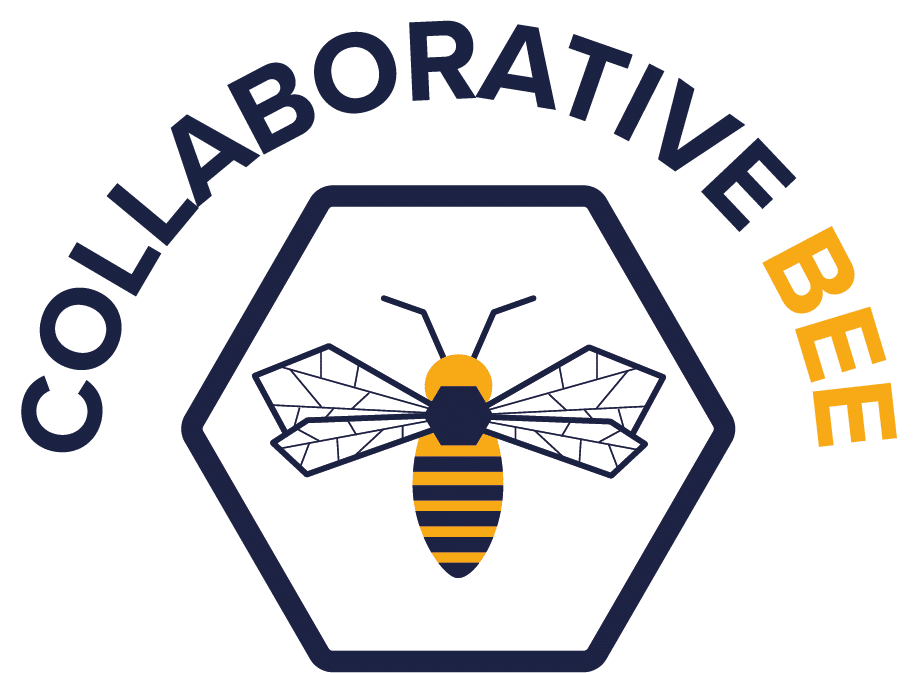Resources
The Collaborative Bee – Engineering Assistant (GPT-5) is your virtual mentor for open aerospace and collaborative engineering projects. It helps teams working under the Lesser Open Bee License 1.3 to structure their documentation, manage TRL stages, and prepare open deliverables (WBS, Gantt charts, reports, and simulations).
💡 Access the Collaborative Bee GPT-5 Assistant
This page gathers all open learning, technical, and research resources available to participants of the Collaborative Bee Ecosystem — including tools, courses, research links, and publications on sustainable and intelligent aircraft design.
🧠 Open Learning Tools and Digital Workflows
Collaborative Bee projects integrate modern digital design and analysis platforms that enable distributed teamwork between universities and partners. All tools listed below are accessible under academic or open-source licenses:
- Onshape: online 3D CAD for collaborative aircraft structure modeling.
- SimScale: aerodynamic (CFD) and stress analysis for wings, fuselages, and VTOL rotors.
- QGIS & BlenderGIS: mapping and environmental modeling for airspace and urban mission zones.
- CesiumJS: 3D flight visualization for open simulation interfaces.
- Next.js & Node.js: data dashboards and open interactive platforms.
Each of these tools is explained with tutorials and example projects in the Collaborative Bee Wiki – Tools Section.
🎓 Future Aircraft Design Courses
Academic partners of the Collaborative Bee Network have co-developed an open curriculum introducing next-generation aircraft design. The Future Aircraft Design Course provides engineering students with hands-on experience in collaborative digital development:
- Concept design and configuration trade studies (payload, propulsion, range).
- Open modular architectures (Bee + Basket concept).
- Hybrid and electric propulsion systems.
- AI-assisted aerodynamic optimization.
- Environmental impact and life-cycle analysis.
- Research project documentation under the Lesser Open Bee License 1.3.
Educational materials are openly shared on the Education Portal and can be reused by partner schools.
🚀 The Future of Aeronautics: AI and Next-Gen Concepts
Bee projects explore the convergence between aeronautics, sustainability, and artificial intelligence. Collaborative research teams are currently developing next-generation systems for predictive design, intelligent flight control, and environmental efficiency.
- AI-assisted CFD: machine learning models predicting drag and lift coefficients.
- Autonomous Control: reinforcement learning autopilots for hybrid VTOLs (Mini-Bee project).
- Mission Optimization: real-time trajectory planning and weather adaptation (GPS 4D project).
- Design Knowledge Graphs: semantic data models linking materials, loads, and test results.
These initiatives are published on the AI in Aeronautics Hub, connecting aerodynamics, robotics, and data science communities.
🏫 Partner Universities and Research Institutions
The Collaborative Bee Consortium unites several major aeronautical engineering schools. Each contributes to a specific research axis while sharing their results openly through the Collaborative Bee Wiki.
- ESTACA Bordeaux: mechanical structures and modular systems.
- ENSTA Paris: system modeling, sustainability, and carbon analysis.
- INSA Toulouse: aerodynamic computation and optimization algorithms.
- Ecole Centrale de Lyon (ECL): composite materials and crash modeling.
- Cy-Tech: software engineering, data science, and digital twins.
Additional industrial partnerships are established under private collaboration chapters of the Lesser Open Bee License.
🔬 Collaborative R&D in Aeronautics
All open projects coordinated by Technoplane SAS apply the principles of Collaborative R&D: transparent, multi-institutional cooperation where every deliverable is reusable and properly attributed.
- Bee-Plane™: modular mid-range aircraft with detachable fuselage for civil and medical missions.
- ISO-Plane™: hybrid cargo aircraft for ISO containers with autonomous loading system.
- Mini-Bee™: two-seat hybrid VTOL for urban air mobility and training.
- GPS 4D: real-time route optimization and open flight simulation tools.
Each project follows TRL-based management (Technology Readiness Levels 1–3) and is validated through shared academic audits.

💰 BeeCoin™ and Open Value
To ensure fair recognition of contributors, the ecosystem uses BeeCoin™ — a collaborative value and audit token that records validated contributions across Bee-licensed projects.
BeeCoin is not a speculative cryptocurrency; it is a transparent accounting mechanism for royalties, credits, and traceability within the open engineering network. Every validated TRL deliverable automatically generates a BeeCoin record stored in the ecosystem’s audit database.
📚 Access and Citation
All resources and data published on CollaborativeBee.com are released under the Lesser Open Bee License 1.3 or compatible open-source frameworks (Creative Commons BY-SA, LGPL). When reusing or referencing material, please include the mandatory citation:
“Resource published under the Lesser Open Bee License 1.3 – © Coordinator Technoplane SAS.”
For direct access to documents and training materials:
- Collaborative Bee Wiki – Open Knowledge Platform
- Bee-License Official Website
- Bee-Plane™ Project Portal
- Mini-Bee™ Hybrid VTOL
- ISO-Plane™ Cargo Aircraft
- BeeCoin™ – Collaborative Audit Token
Resources and educational content published under the Lesser Open Bee License 1.3 – © Coordinator Technoplane SAS.
